|
The characteristics of interstellar gas clouds play main role in any
theories of star formation. The dense molecular cloud cores are
probably immediate parents of stars.
However, the molecular clouds
themselves arise obviously from some structures of atomic component
of interstellar medium, because namely in the atomic gas may arise
two-phase system: clouds and intercloud medium, namely neutral atomic
clouds are able to increase their masses and densities due to inelastic
collisions and rapid cooling.
So the neutral atomic clouds may be named
as "grand parents" of stars and their properties play genetic role
for whole chain of matter transformations in the galaxies.
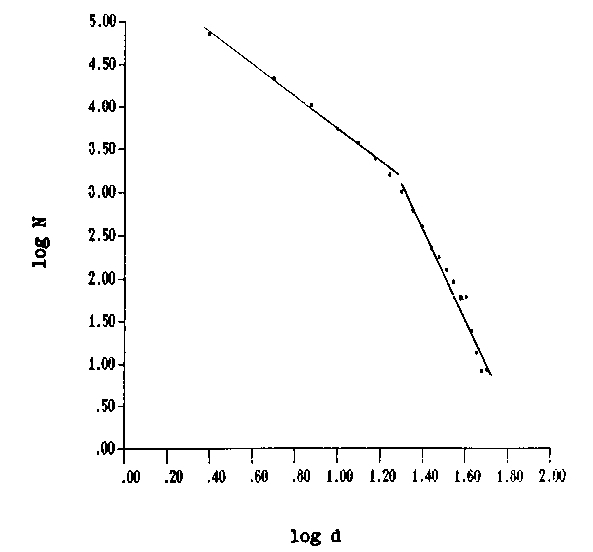
It is found that mean clouds linear diameters along Galactic plane are
2.5 times greater than in transverse direction. The cloud diameter spectrum
( figure 1 ) has a bimodal power shape with spectral indexes
of -1.9+-0.5 between 1 - 16 pc, and -3.9+-0.5 between 16 - 45 pc.
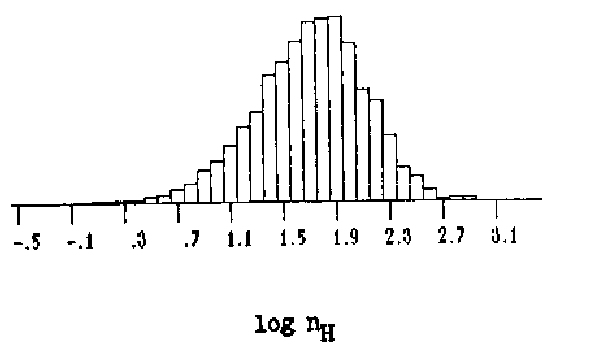
The mass spectrum in the form of M*N(log M) was obtained in
the mass range of 0.6 to 2.5*104 masses of the Sun (figure 3).
It consists
of at least three parts. In the range of 2 to 600 masses of the Sun the spectrum
has a spectral index of 0.8 +- 0.1, in the range of 0.6 to 2 masses of the Sun
the spectral index is 3.0 +- 1, and in the range of 600 to 2*104
masses of the Sun the spectral index is -0.7 +- 0.3.
These data show that the process of coalescence in cloud-cloud
collisions predominates in the middle mass range but the clouds with
low masses are evaporated probably due to very hot ISM component.
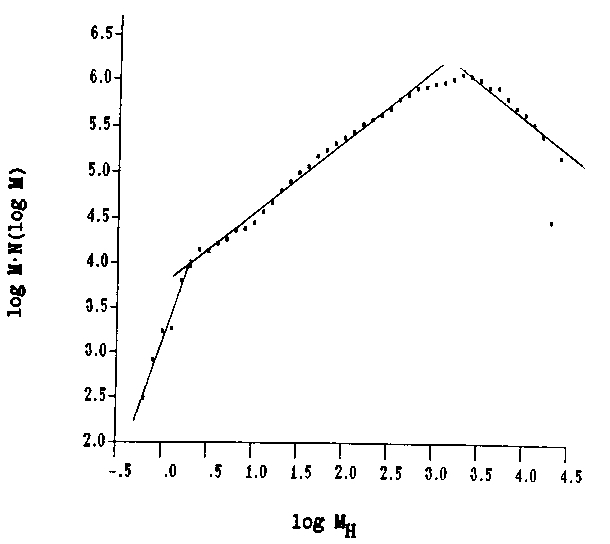
The relation between HI concentrations and cloud diameters is confirmed in the form of nH proportionalli d-1.25+-0.01 ( figure 4 ) regardless of selection effects. The correlation coefficient between log nH and log d is equal -0.87. Figure 4.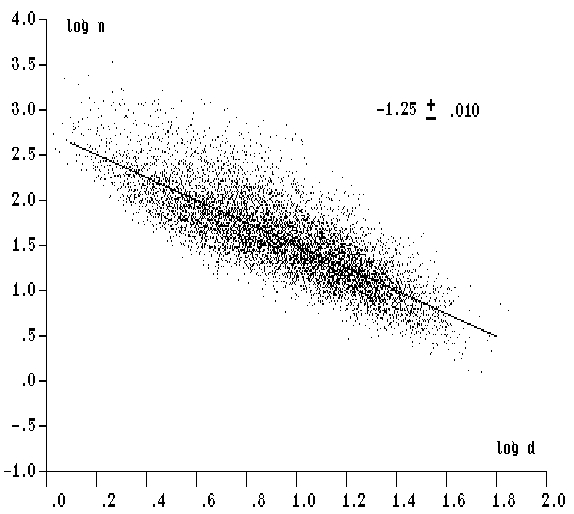
It is shown that other important dependence - velocity dispersion versus cloud diameters, that is well defined for molecular clouds - is completely absent in the case of HI clouds (figure 5). Probably this is due to negligible role of intrinsic turbulence in the HI clouds. Figure 5.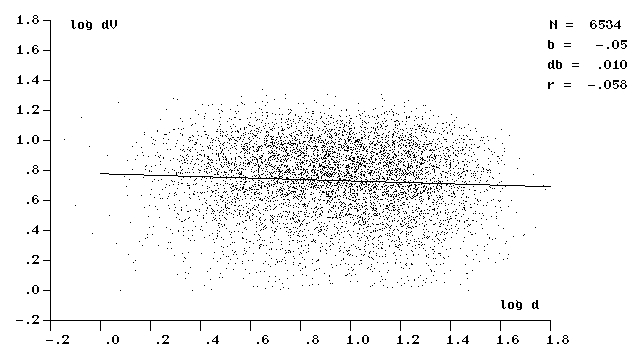
It is found that 36% of HI clouds have systematic velocity gradients across cloud disks that is may be due to rotation of clouds (figure 6). This phenomenon may explain rather high velocity widths of HI line profiles in the obsevable clouds. The mean value of clouds angular rotational velocity is about 10-13 radians X s-1, mean rotational energy is about 1048 ergs, that is comparable to the energy of random cloud motions. Finally, observable quantities of clouds with opposite directions of rotation are equal within 5% in both galactic quadrants investigated. Figure 6.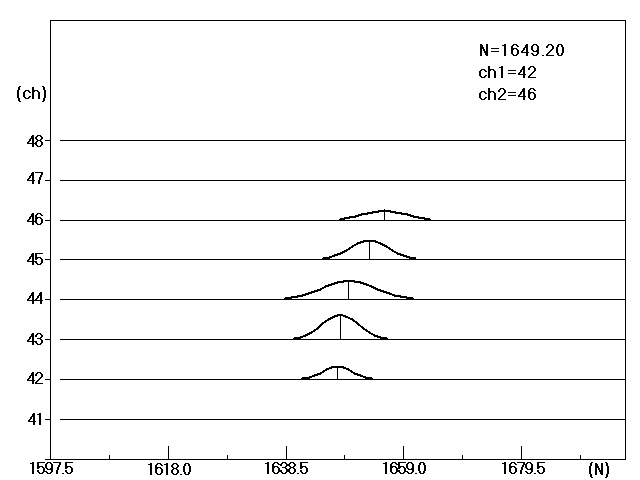
|